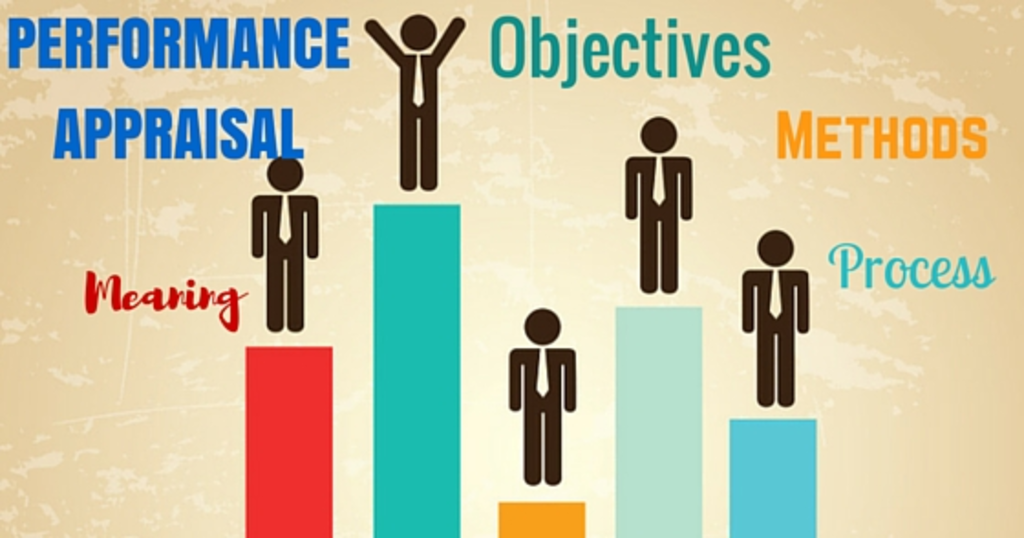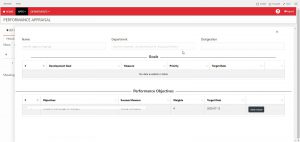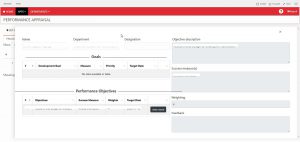- June 17, 2020
- Posted by: Kelvin Kiptum
- Category: Automation, Business Process Automation, Cloud, Digital Transformation, Innovation, Microsoft, Office 365, Post-Digital, Productivity, SharePoint, Workflows

Introduction
Organizations are more often than not required to make people-related decisions, and individuals need fact-based input to grasp current performance and gauge development opportunities. The absence of relevant data often creates a vacuum, leaving individuals confused and organizations receptive to bias, subjectivity, and misinterpretation.
What is an employee performance appraisal?
Employee Performance appraisal is the process of evaluating and documenting an employee’s performance to enhance work quality, output, and efficiency. Employee Performance appraisals perform three important functions within companies.
- They provide feedback to a person on their overall contribution for a period.
- They identify development needs and opportunities for improvement.
- They help inform salary and bonus reviews.
- To advance the organization’s strategic objectives and goals
Why employee performance appraisal is necessary for any organization.
Employee Performance appraisal should be a positive experience that contributes to the general welfare of the organization. If done properly, performance appraisal serves to be a very effective tool to enhance employees’ performance and productivity. It helps individuals to try to do better, raises self-esteem and motivation. It also strengthens the management and staff associate relationship and fosters commitment from both parties.
Main Objectives of Performance Appraisal
- Promotions
- Confirmations
- Training and Development
- Compensation Reviews
- Competency Building
- Improve Communication
- Evaluation of HR Programs
- Feedback and Grievances
- Aligning Individual Objectives with the Organizational Strategic Objectives
Differences between Traditional and Modern Appraisal Methods
| Traditional | Modern |
| Ranking method | Management by Objectives (MBO) |
| Paired comparison | Psychological appraisals |
| Grading method | 360-degree feedback |
| Force distribution method | Assessment center method |
| Checklist method | Behaviorally anchored rating scale (BARS) |
| Critical incidents method | 720-degree method |
| Essay method | Cost accounting method |
| Field review method | |
| Confidential method |
Solution Overview
The solution we developed is meant to mitigate traditional methods (mentioned above) of conducting performance appraisals. The intricate solution was built using technologies i.e. Microsoft Office 356 products (SharePoint Workflows, SharePoint Lists, and SharePoint Document Libraries) and HTML/CSS/JavaScript.
HTML/CSS/JavaScript handles the user interface and app logic required on the client–side. The user interface abstractly displays data that is stored in SharePoint.
Image of the request form
Images of a submitted appraisal awaiting evaluation
SharePoint provides features such as Lists and Libraries. A list is a collection of data that gives you and your co-workers a flexible way to organize information, and Libraries provide a location (or a repository) on a SharePoint Team Site where you can upload, create, update, and collaborate on files with team members.
Image sample of the SharePoint List
SharePoint workflows are pre-programmed mini-applications that streamline and automate a wide variety of business processes. Workflows can range from collecting signatures, feedback, or approvals for a plan or document, to tracking the current status of a routine procedure. SharePoint workflows are designed to save you time and effort and to bring consistency and efficiency to tasks that you perform regularly.
Employee Performance Appraisal Application Features:
Our solution offers some of the following features:
- Allow setting Performance Objectives with Weighting Features
- Allow setting Development or Learning Goals with Priority Features
- Mid-Year Assessment and End-Year Assessment Reviews
- 360 Degrees Assessment
- Status reporting and tracking
- Built-in integrity checks to ensure compliance
- Customizable to your organization’s policies and procedures
Business Benefits of Automating Your Employee Performance Appraisal Process
To digitize and automate the Employee Performance Appraisal process will offer the following benefits:
- Enhance Accountability and Compliance
- Reduce on costs and resource wastage (no paper printing and other associated costs and resources)
- Increase visibility through status tracking
- Increase productivity in your organization
Case Study
We developed a Performance Appraisal Application for Tax Justice Network Africa. As a side note, The Tax Justice Network Africa (TJNA) is a Pan-African organization and a member of the Global Alliance for Tax Justice. It advocates for tax policies with pro-poor outcomes and tax systems that curb public resource leakages and enhance domestic resource mobilization.
Did you find this post helpful? If so, please share it.





